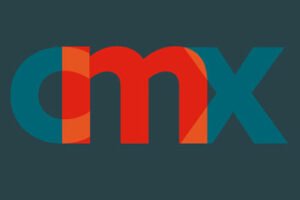
Mark Croxon, Co-Founder, Reifi Consulting and Co-Author for CMX
I recently had the opportunity to moderate a compelling session titled “The Path to Scalable Trading: Uniting Asset Classes for Efficient and Dynamic End-to-End Workflows” at CMX.
This session was part of our Leadership Xchange series and featured insights from industry leaders: Sabina Awan, Head of Strategic Initiatives at Fidelity International; Jennifer Young, Product Manager at Franklin Templeton; Laura Jane Carlyle, Senior Fixed Income and FI ETF Trader at BlackRock; and Chris Hollands, Head of EMEA and US Sales at TS Imagine.
The discussion—conducted under the Chatham House Rule—delved into the challenges and strategies for creating scalable, Multi-Asset trading workflows in an environment of limited resources and budget constraints.
Key Discussions and Insights
Creating a Multi-Asset, One-Stop Shop
Our panel began by addressing the pressing need for integrating various asset class functionalities into a cohesive, Multi-Asset trading platform. We emphasised that this integration isn’t merely about merging trading desks, but optimising infrastructure to handle multiple asset classes efficiently. The panel highlighted the inefficiencies of a siloed approach and pointed out that the current market pressures make it imperative to streamline operations and reduce costs.
Sharing specific use cases, we illustrated some sample approaches to these challenges, especially in the Fixed Income space, focusing on advanced technology and AI to handle fragmented liquidity and execution platforms. Obviously one size does not fit all, so firm size influences the best approach; smaller firms might naturally gravitate towards a Multi-Asset strategy, while larger firms need to balance specialisation with scalable integration.
Building Blocks for End-to-End Workflows
The discussion then moved to the essential components of a sophisticated, end-to-end workflow that can scale across asset classes. We noted that a truly dynamic trading desk must incorporate both high-touch and low-touch capabilities, blending systematic trading with expert trader insights. It was argued that there’s alpha in every trade, and traders should be seen as advisors to portfolio managers, contributing to portfolio composition and liquidity strategies. This holistic approach ensures that technology, operational strategies, and trader expertise are all aligned towards optimal performance.
Evolving Electronic Workflows
The panel highlighted the evolving landscape of electronic workflows and the solutions that enable more efficient Cross-Asset trading. We discussed how standardising data and enhancing EMS/OMS integration can significantly boost operational efficiency. The importance of maintaining asset class specialisms while integrating desks more closely to adapt to dynamic client portfolios and market conditions was acknowledged, and we added that innovative tools and platforms are critical for achieving seamless, low-touch execution across multiple asset classes.
Long-Term Industry Moves Away from Silos
The panel explored the potential for the industry to move away from asset class silos and towards a more unified approach to trading. It was pointed out that while it’s not about shoehorning everything into one model, there’s a clear need for breaking down silos to optimise cost and efficiency. Again, we explored experiences of creating a global product group to better integrate desks while preserving necessary specialisms—an approach that helps firms adapt to changing market dynamics and client needs effectively.


Implementable Strategies
Strategy 1: Optimise Infrastructure for Multi-Asset Trading
Firms should evaluate their current infrastructure to identify areas where Cross-Asset functionalities can be integrated. This might involve upgrading technology platforms, consolidating data sources, and ensuring seamless EMS/OMS integration.
Regular reviews and updates to the infrastructure can help maintain efficiency and scalability.
Strategy 2: Incorporate Advanced Technologies
Leveraging advanced technologies, such as AI and machine learning, can significantly enhance trading operations. These technologies can help to manage fragmented liquidity, optimise execution strategies, and provide real-time insights that are critical for Multi-Asset trading.
Firms should invest in these technologies to stay competitive and efficient.
Strategy 3: Maintain a Balance Between High-Touch and Low-Touch Capabilities
Creating a trading environment that balances high-touch and low-touch capabilities is essential for handling different types of trades and market conditions. This requires structuring teams and workflows in a way that allows for flexibility and responsiveness, ensuring that both systematic and discretionary trading strategies are effectively utilised.
Strategy 4: Break Down Silos for Cost Efficiency
Moving away from asset class silos can lead to significant cost savings and operational efficiencies. Firms should focus on creating more integrated desks and workflows, while still maintaining the necessary specialisms. This might involve cross-training traders, consolidating trading platforms, and fostering a more collaborative culture across asset classes.
Conclusion
The session highlighted the critical need for uniting asset classes to create scalable, efficient trading workflows. By optimising infrastructure, leveraging advanced technologies, balancing high-touch and low-touch capabilities, and breaking down silos, firms can navigate the challenges of limited resources and budget constraints while maintaining best execution standards.
I encourage our community to apply these strategies and insights to their trading operations. The discussed approaches not only promise to enhance efficiency and scalability, but also ensure that firms remain competitive in an ever-evolving market landscape. For those interested in further exploration, numerous resources and case studies are available that delve deeper into Multi-Asset trading integration and optimisation.
This session provided a wealth of knowledge, and I look forward to seeing how our community implements these insights to drive innovation and efficiency in their trading practices…



